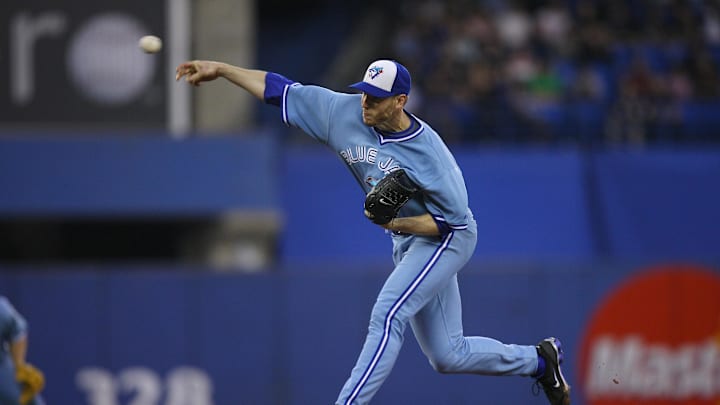No. 3 Jimmy Key
Jimmy Key, one of the more underrated arms of the 1980s, was quietly dominant during this time in a Jays uniform. Drafted by the Blue Jays in the third round back in 1982, Key rose to the Major Leagues quickly. His first pro season in 1984 would be out of the bullpen, authoring a 4.65 ERA over 63 appearances, producing a 1.645 WHIP. While early results weren’t encouraging, his second season would quickly prove Key was a force to be reckoned with.
1985 saw Key throw 212.2 innings over 35 total appearances, 32 of them starts. Key’s reputation as a strike thrower wielded effective results. Though his K/9 sat at only 3.6, his low BB/9 of 2.1 and respectable H/9 of 8 resulted in an ERA of 3.00 for his first season as a starter. Key would also see his first All-Star action this year.
Key’s best season would come in 1987, as he led MLB in ERA, WHIP, and H/9, finishing second in Cy Young voting. These would be the best numbers of Jimmy’s career, but he would routinely complete at least 200 innings a season and produce an ERA under 4.50. Key’s consistency, with a bit of star power mixed in, has him as one of the best starters in franchise history, at least the best lefty at that.
